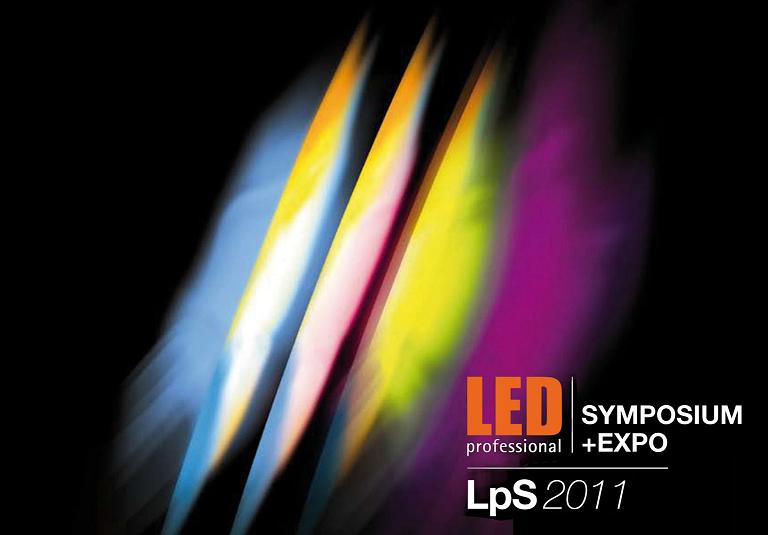LED professional symposium + expo (LpS 2011) from 27th through 29th September 2011

LED: The light source of the future
Experts all agree: the LEDs are the light source of the future – and the future is beginning today: It will be here in Bregenz world-wide for the first time that developer, purchaser, users, but also researchers, suppliers of LED and system solutions, distributors, engineer service providers and other people interested in this topic are gathering to participate at the convention and trade fair LpS in order to discuss the lighting solutions of tomorrow.
The symposium will be inaugurated by Siegfried Luger, the expo itself by the President of the Vorarlberg State Parliament Dr. Bernadette Mennel. On the one hand, the convention and trade fair LpS offers a symposium with numerous presentations of international experts. On the other hand almost 60 manufacturer and exhibiting companies from all over the world – among these world market leaders such as Osram, Avago Technologies, e:lumix, Tridonic, Philips Lumileds, Cree and many more – present their latest products that are all about the LED-technology.
LED convention and trade fair
The usage of LEDs for illumination purposes is a very complex issue. “The LED technology for lighting purposes urgently needed an own international podium - and this podium has been created with the LED professional symposium + expo 2011 which we abbreviate with LpS 2011,” said Siegfried Luger, the symposium director responsible for the organization of the event. “Today you all witness the origin of a new technology fair, similar to the ‘embedded world’ in Nuremberg a couple of years ago,” Mr. Luger underlined at the inaugural press conference. “The LpS 2011 has the potential to become the leading trade fair or the most important European event that is all about the LED-technology in lighting applications.”
The fact that the President of the State Parliament of the Vorarlberg Federal State Mrs. Dr. Mennel in person opened the expo emphasizes the great importance of this event. The organizer was able to win over top-class contributors to come to the convention: “They are all real experts in their fields and worldwide leading LED-manufacturers or global players in the range of the lighting industry,” Siegfried Luger pointed out. These contributors are not only from central Europe (A, CH, D, GB, H, I, NL, RO) but also from Israel, Taiwan and the USA. “So in the next days, we are going to set the course for the future of our illumination technology and establish relations which will no doubt significantly shape our lighting solutions of tomorrow,” continued Mr. Luger.
New technological challenges
In contrast to the ordinary light bulbs (or their socket-compatible substitutions) the LEDs, however, are not suitable – apart from some special exceptions – for the direct connection to the 230 AC-voltage-grid as the LEDs require a carefully regulated current at a low DC-voltage. This calls for a special electronics know-how that the classic lamp manufacturers very often do not possess in this form yet.
Although the LED-light sources are exceptionally energy-efficient even these semiconductors emit heat to the surroundings; however, this happens in a completely different way in comparison to the so far used illuminants, thus an efficient thermo-management is an absolute must. By selectively controlling LEDs it is possible to generate light in any desired color. Having the proper device at one’s disposal the end user can even determine the color and intensity of the light at any time matching his individual requirements.
The design of LED-lamps requires proper system integration where know-how in the fields of LEDs, electronics, optics, thermo-management and manufacturing technology is demanded.
You will find more information all about the first LED professional symposium + expo 2011 on the website www.lps2011.com.
Background information on the technology: LED-lamps are the most efficient light source
The classic filament lamps (“light bulbs”) that meanwhile have been banned for the most part from the shelves are, as we all know, the worst illumination choice due to their extreme energy consumption – they heat more than illuminate. The CFL called energy-saving lamps (compact fluorescent lamps) are much better, however, the most efficient light sources are the LED-lamps.
Only in the beginning of 1997 this device would have worked merely in the lab of the Fraunhofer institute for applied solid-state physics and in the Japanese enterprise Nichia. But already in 1998 Osram Opto Semiconductors produced the first commercially used white LEDs. At that time, these semiconducting light sources were expensive, but nowadays they are very well suitable for private homes in the financial aspect as well.
Thus it was a logical step for ‘Stiftung Warentest’ (German testing organization) not only to examine CFL lamps within a first-time large energy-saving lamp test in their issue no. 4 in 2010 but also the particularly efficient LED-lamps. In the current issue of their magazine “test” from September 2011 ‘Stiftung Warentest’ even wrote in the column “our advice” of the lamp-test: “the triumphant winners of the test are the LED-lamps...”
New liberties for designer
The energy-saving lamps tested by ‘Stiftung Warentest’ were the lights that the end user can apply in lamps with the standardized socket E27. The LEDs, however, show their extraordinary advantage when designers purposefully place them at certain spots of the lamps. As the LEDs are much smaller than the conventional light bulbs the designers experience completely new liberties. Combined with special optics creative heads can create a completely newly illuminated world with LEDs which simultaneously require much less energy.
By a selective control of LEDs for instance light of any color can be generated; provided the end user has the appropriate device he can adapt the color and intensity according to his individual requirements.












